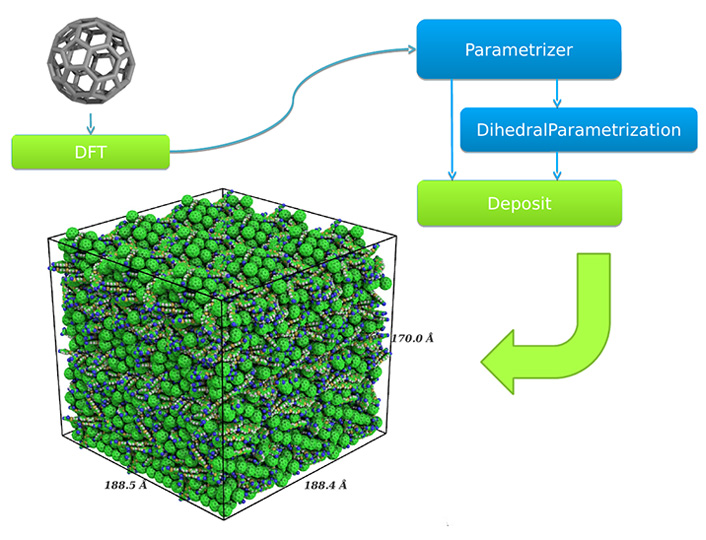From single molecule to light emission
Conquering the multi-scale problem using UNICORE
Nanomatch GmbH specializes in the simulation of organic thin-film morphologies, their electronic properties and interface structures such as bulk-heterojunctions. The company’s software allows materials discovery in a multi-scale approach building a morphology from a single molecule and calculates electronic properties such as electron or hole mobilities in a self-consistent density functional theory (DFT)-based approach.
Even though the multi-scale approach reduces the total computational effort , it still requires cluster resources to deliver results in adequate timescales. For a company the diverse availability of different cluster managers and job submission tools poses a large development task, which differs for each customer.
UNICORE is used as a unified and general grid API to allow the company’s software to run on the diverse landscape of clusters ranging from local test clusters to large supercomputing centres. Targeting only UNICORE allows the development of a single, tested code path and enables reproducibility by encapsulating the company’s products in workflows, which can be prepared by senior scientists and applied in large-scale material screening applications by junior-scientists.
The previous development efforts relied on the UNICORE Rich Client, but currently Nanomatch focuses on the REST API, which is used to develop a generalized workflow client including workflow inheritance.
One such workflow is the morphology generation workflow, which allows the generation of amorphous thin-film morphologies based on the atomic coordinates of a single molecule:

© Nanomatch GmbH
A morphology is generated only from the atomic coordinates of a molecule. After relaxing the molecule in a geometry relaxation DFT step, partial charges are calculated and possible dihedral angles are parametrized in a custom dihedral forcefield. The forcefield is then used in the linear-scaling deposition approach to generate a morphology shown in the lower left corner.
